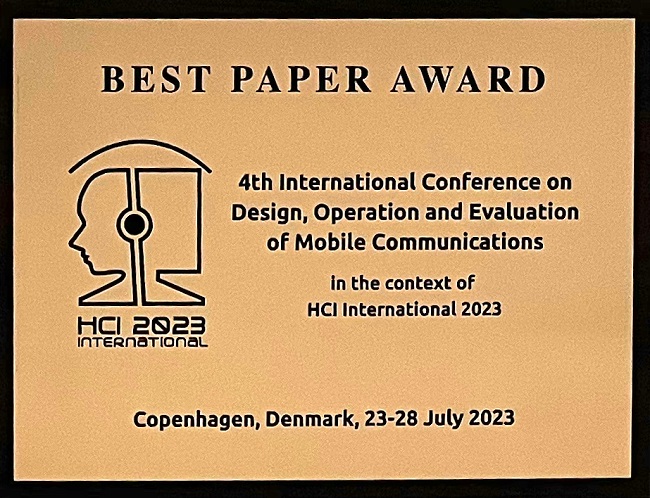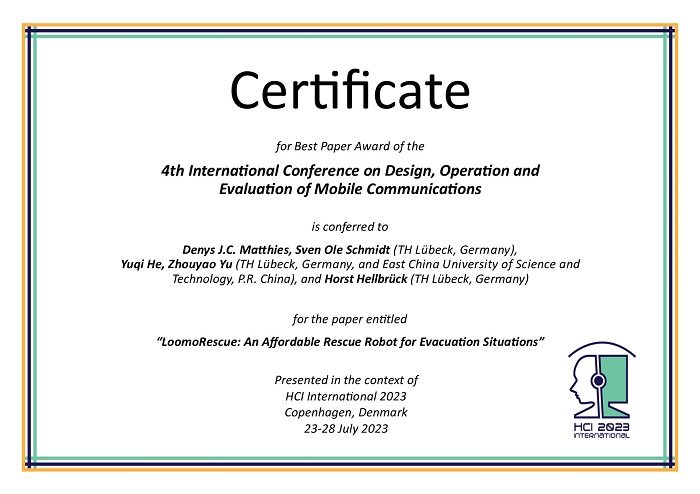
Best Paper Award for the 4th International Conference on Design, Operation and Evaluation of Mobile Communications, in the context of HCI International 2023, Copenhagen, Denmark, 23-28 July 2023

Certificate for Best Paper Award of the 4th International Conference on Design, Operation and Evaluation of Mobile Communications
The award has been conferred to
Denys J.C. Matthies, Sven Ole Schmidt
(Technical University of Applied Sciences Lübeck, Germany),
Yuqi He, Zhouyao Yu (Technical University of Applied Sciences Lübeck, Germany, and East China University of Science and Technology, China), and
Horst Hellbrück (Technical University of Applied Sciences Lübeck, Germany)

Denys J.C. Matthies
(presenter)
for the paper entitled
"LoomoRescue: An Affordable Rescue Robot for Evacuation Situations"
Presented in the context of
HCI International 2023
Copenhagen, Denmark
23 - 28 July 2023
Paper Abstract
"Rescue robots can play an important role in disaster situations, such as locating people for evacuations. This paper demonstrates how to transform an affordable consumer robot, such as the Loomo Segway, into an intelligent rescue robot. Our proof-of-concept shows how LoomoRescue can autonomously browse offices to locate people and how to detect their vital signs through posture and heart rate detection in real-time. Our indoor localization is a SLAM approach based on an external UWB position system plus a movement correction with an ultrasound sensor in combination with an IMU. The accuracy of linear movement showed minor deviation with an average error of 1.65%, while the angular movement showed an error of 2.43%. We classify three types of critical postures with an average detection rate of 78.33% within a distance of 1–20 m. Our optical heart rate detection is 87.3% accurate to the ground truth. We envision that such an affordable robot can be used for evacuation purposes as it may be part of the standard inventory in the future."
The full paper is available through SpringerLink, provided that you have proper access rights.